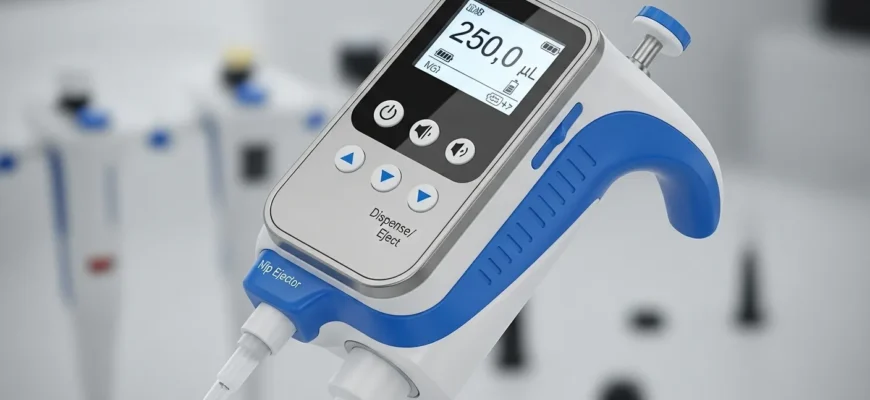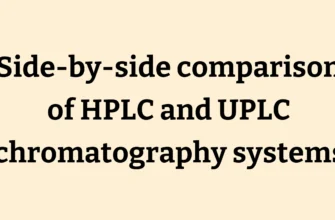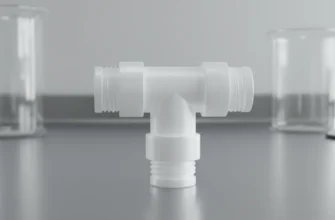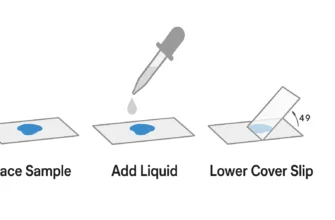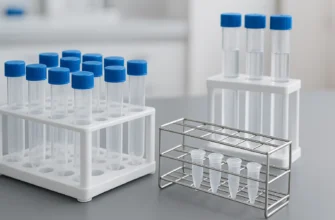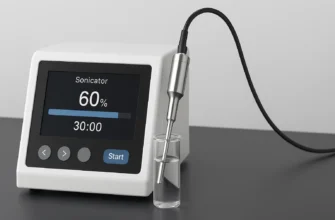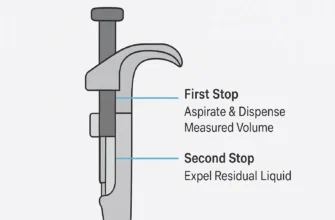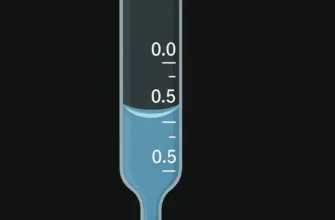The Precision Foundation of Laboratory Science: A Comprehensive Guide to Pipettes
In the intricate world of scientific discovery, progress hinges on the ability to manipulate minuscule liquid volumes with unwavering precision. While complex analytical instruments and automated systems often capture attention, the electronic pipette remains the foundational laboratory tool driving reproducible experiments. From molecular biology research to clinical diagnostics, mastering liquid handling technology is essential for generating trustworthy scientific data. This comprehensive guide explores the science, applications, and evolution of pipettes—from traditional glass pipettes to modern electronic pipettes with programmable functions—providing insights into how precise volume measurement shapes scientific advancement.
Understanding Pipettes: Essential Laboratory Instruments
A pipette is a precision laboratory tool designed for accurate liquid transfer of measured volumes. These instruments enable precise aspiration (drawing up) and dispensing (releasing) of solutions across a spectrum ranging from simple Pasteur pipettes to sophisticated electronic pipettes with digital display capabilities. All pipettes share the fundamental purpose of ensuring measurement accuracy in scientific experiments, making them indispensable across chemistry, biology, medicine, and countless other fields.
The evolution from basic glass pipettes to modern electronic pipettes represents a significant advancement in laboratory applications. Today’s liquid handling market, valued at USD 6.65 billion in 2024 and projected to reach USD 15.79 billion by 2034, reflects the critical importance of precision volume measurement in contemporary research.
Historical Development of Precision Liquid Handling
The journey toward modern liquid handling began centuries ago with rudimentary glass droppers. Louis Pasteur pioneered the use of simple glass tubes—now known as Pasteur pipettes—in his groundbreaking microbiological work. The revolutionary leap occurred in the mid-20th century with the invention of the air displacement micropipette, a piston-operated device that enabled scientists to handle microliter volumes with unprecedented precision, fundamentally transforming molecular biology and biochemistry research.
The Critical Role of Pipette Mastery in Modern Science
In scientific research, reproducibility forms the cornerstone of validity. Since most chemical reactions and biological processes are highly sensitive to reagent concentrations, even minor volumetric errors can compromise data integrity, waste precious reagent volumes, and invalidate conclusions. The global laboratory equipment market, valued at USD 30.9 billion in 2023 and expected to reach USD 60.25 billion by 2032, underscores the fundamental importance of precision liquid handling in modern research infrastructure.
Scientific Principles Behind Pipetting Technology
Understanding pipette mechanics reveals the elegant engineering principles governing precise liquid transfer. Modern electronic pipettes primarily employ two mechanisms: air displacement and positive displacement methods, each optimized for specific applications and sample types.
Air Displacement Micropipettes
The most prevalent type, air displacement micropipettes, operates through indirect liquid transfer. A motorized piston within the pipette body creates controlled vacuum or pressure within an air-holding chamber. When the plunger depresses and releases, the resulting vacuum draws a specific volume into disposable tips. Upon subsequent plunger activation, the air cushion pushes liquid out through the tip. This method excels with standard aqueous solutions and represents the foundation of most laboratory applications.
Positive Displacement Systems
Positive displacement pipettes address challenging liquids including viscous, volatile, or dense samples. Unlike air displacement systems, the piston directly contacts the liquid within specialized pipette tip consumables. This direct mechanical action eliminates issues related to air pressure variations, evaporation, or surface tension that can affect accuracy of pipetting with difficult samples.
Volume Measurement Precision
Scientific experiments require specific volumetric units. Pipettes measure volumes in milliliters (mL) or microliters (µL), with precision referring to measurement repeatability and accuracy indicating proximity to true values. High-quality calibrated volume adjustment mechanisms excel in both parameters, ensuring reliable liquid handling across diverse research applications.
Comprehensive Pipette Classification and Mechanisms
The diverse pipette market, growing from $1.67 billion in 2024 to an estimated $1.72 billion in 2025, offers specialized instruments tailored to specific laboratory applications and workflow requirements.
Manual vs. Electronic Pipettes
Mechanical pipettes rely on operator thumb pressure to depress plungers for liquid transfer. These robust, cost-effective instruments excel across numerous tasks. Electronic pipettes, conversely, employ motors to drive piston mechanisms, automating aspiration and dispensing at button activation. This automation significantly improves reproducibility by eliminating user-to-user variability while reducing repetitive strain injury risks.
Research indicates that nearly 90% of scientists using pipettes for over one hour daily report hand and elbow disorders, making ergonomic designs increasingly crucial. Electronic pipettes address these concerns through motorized piston operation, reducing physical strain during extended pipetting sessions.
Fixed vs. Adjustable Volume Systems
Fixed-volume pipettes dispense predetermined amounts (e.g., 100 µL), offering exceptional durability and accuracy for repetitive tasks. Adjustable pipettes provide flexibility through volume adjustment knobs or digital displays, enabling volume changes within specified ranges. This versatility proves essential for experiments requiring varying volumes or complex protocols.
Single-Channel vs. Multichannel Configurations
Single-channel pipettes handle individual samples sequentially. For high-throughput applications involving 96-well plates, multichannel pipettes featuring 8 or 12 channels enable simultaneous liquid transfer into multiple wells, dramatically accelerating workflows in genomics, drug discovery, and clinical diagnostics.
Specialized Pipette Designs
Beyond standard configurations, specialized pipettes serve unique functions:
-
Volumetric pipettes: Long glass pipettes with single calibration marks for extremely high accuracy
-
Pasteur pipettes: Simple plastic or glass droppers for non-quantitative transfers
-
Serological pipettes: Graduated pipettes for precise volume delivery in cell culture
-
Repeating pipettes: Enable multiple dispensing without re-aspiration, ideal for reagent preparation
Essential Components: The Science of Pipette Tips
Pipette tips represent critical components directly contacting samples, making their quality paramount for measurement accuracy, contamination prevention, and experimental integrity.
Engineering and Materials Science
Pipette tips typically utilize high-purity polypropylene due to its excellent chemical resistance and manufacturing properties. The conical design creates perfect, airtight seals with pipette barrels—any fitting imperfection can cause leaks leading to inaccurate measurements. Advanced tips feature low adsorption surfaces using hydrophobic coatings to prevent liquid retention, ensuring complete dispensing of precious samples.
Polypropylene offers excellent resistance to many common acids, bases, and organic solvents, though compatibility varies depending on specific chemicals. Standard pipette tips withstand autoclaving at 121°C, making them suitable for sterile applications. However, certain organic solvents like chloroform, toluene, and xylene can cause swelling or degradation over extended exposure.
Specialized Tip Technologies
Pipette tip varieties address specific requirements:
-
Universal tips: Compatible across multiple pipette brands
-
Filtered tips: Contain barriers preventing aerosol contamination, essential for PCR sample preparation
-
Low retention tips: Feature specialized coatings minimizing sample adhesion
-
Extended-length tips: Reach deep vessels without barrel contamination
Quality Impact on Measurement Accuracy
Using inferior pipette tip consumables represents a common error source. Inconsistent wall thickness, manufacturing imperfections, or poor sealing compromises air displacement mechanisms, leading to inaccurate liquid handling. Investing in high-quality tips from reputable manufacturers proves crucial for safeguarding experimental reliability and reproducibility.
Mastering Pipetting Technique: Best Practices for Precision
Even the most advanced electronic pipette cannot compensate for poor technique. Proper handling protocols minimize user-introduced errors while ensuring consistent, reliable results across laboratory applications.
Pre-Pipetting Preparation
Before beginning, verify correct pipette selection for intended volumes—pipettes achieve maximum accuracy in their upper operating range. Select appropriate pipette tips and ensure firm seating for airtight seals. For temperature-sensitive samples, pre-wet tips by aspirating and dispensing liquid three to four times, equilibrating the internal air cushion.
Precise Aspiration and Dispensing
Aspiration: Depress plunger smoothly to first stop. Immerse tip 2-3 mm below liquid surface at 90-degree angle. Release plunger slowly and steadily, avoiding air bubbles.
Dispensing: Position tip against receiving vessel wall at 45-degree angle. Depress plunger smoothly to first stop, pause, then proceed to second stop (blowout) for complete liquid expulsion. Slide tip up vessel wall before releasing plunger.
Common Errors and Solutions
Frequent mistakes include rapid aspiration (causing splashing), excessive tip immersion (creating liquid adherence), and tip reuse between samples (causing cross-contamination). Air bubbles indicate poor sealing or rapid aspiration, invariably resulting in inaccurate volume delivery.
Advanced Electronic Pipette Functions
Electronic pipettes offer sophisticated programmable modes enhancing precision and efficiency:
-
Reverse pipetting: Optimized for viscous liquids
-
Multi-dispensing: Multiple aliquots from single aspiration
-
Serial dilutions: Automated dilution sequences
-
Mixing protocols: Programmable mixing cycles
These features contribute to the growing laboratory automation market, projected to reach USD 15 billion by 2034, reflecting increased demand for precision and efficiency in liquid handling workflows.
Diverse Applications Across Scientific Disciplines
Pipettes demonstrate remarkable versatility across virtually every scientific field involving liquid handling, from fundamental research to industrial quality control.
Molecular Biology and Genomics
In molecular biology, electronic pipettes prove indispensable for PCR sample preparation, DNA sequencing, gel electrophoresis loading, and delicate cloning procedures. The small volumes and high precision required in genomic DNA manipulation would be impossible without air displacement micropipettes.
Cell Culture and Microbiology
Maintaining sterile conditions proves critical in cell culture and microbiology. Pipettes used with sterile, filtered tips enable aseptic transfer of growth media, cell passaging, and reagent addition without introducing contaminants to cell culture fluid.
Analytical and Clinical Chemistry
In analytical chemistry, accuracy remains paramount. Volumetric pipettes create precise standard solutions for calibration curves, while electronic pipettes measure patient samples for clinical diagnostics assays determining blood glucose, cholesterol levels, or disease markers.
Pharmaceutical Research and Development
From early-stage drug discovery to manufacturing quality control, pipettes support every development phase. They enable high-throughput screening of thousands of compounds, formulation development with precise ingredient ratios, and clinical diagnostics sample preparation for analysis.
Industrial and Environmental Applications
Beyond research settings, pipettes play vital roles in quality control across food and beverage industries for contaminant testing and ingredient measurement. In environmental science, they prepare water and soil samples for pollutant analysis.
Ensuring Performance: Calibration, Maintenance, and Ergonomics
Pipettes require regular maintenance to preserve precision performance. Proper calibration, routine care, and ergonomic considerations prove crucial for long-term accuracy and user safety.
Critical Importance of Regular Calibration
Shockingly, 73% of experimental failures result from non-compliance with pipette operating specifications, highlighting the critical need for proper maintenance. The pipette calibrators market is projected to grow at 6.45% CAGR from 2025 to 2029, reflecting increased awareness of calibration importance.
Pipette failures typically occur randomly—approximately 90% result from accidents, misuse, or unpredictable events rather than normal wear. Regular calibration programs detect these silent failures before they compromise experimental results.
Mean Time Before Failure Analysis
Determining appropriate calibration frequency requires understanding Mean Time Before Failure (MTBF) for specific pipette populations. Research indicates that approximately 27% of monitored pipettes fail within six-month cycles, necessitating frequent calibration schedules to maintain target reliability levels.
Ergonomic Considerations and RSI Prevention
Repetitive strain injury represents a significant concern in laboratory applications. Nearly 90% of scientists regularly using pipettes for over one hour daily report hand and elbow disorders. Electronic pipettes with ergonomic designs significantly reduce physical strain through:
-
Motorized piston operation eliminating thumb pressure
-
Lightweight construction reducing lifting forces
-
Programmable functions minimizing repetitive motions
-
Ergonomic handles promoting natural hand positioning
Maintenance Best Practices
Effective pipette maintenance includes:
-
Regular calibration according to manufacturer specifications
-
Proper cleaning with appropriate solutions following waste disposal guidelines
-
Chemical resistance verification for specific applications
-
Pipette stand storage to prevent contamination
-
Microprocessor-controlled operations updates for electronic pipettes
Cutting-Edge Developments and Future Directions
The liquid handling industry continues evolving with technological innovations addressing modern research demands. Integra Biosciences recently launched the SWITCH hybrid pipette in September 2025, combining manual control with electronic repeat dispensing capabilities, exemplifying industry trends toward versatile, user-friendly designs.
Automation Integration
The growing laboratory automation market, valued at USD 6.5 billion in 2025 and projected to reach USD 16 billion by 2035, drives integration of electronic pipettes with automated systems. Microfluidic pipettes and liquid-transferring laboratory tools increasingly incorporate artificial intelligence and machine learning for optimized performance.
Advanced Materials and Coatings
Continued development of specialized pipette tip materials addresses challenging applications. Low adsorption tips, chemical resistance improvements, and advanced polypropylene formulations expand compatibility with diverse reagent preparation requirements.
Ergonomic Innovations
Recognizing the prevalence of repetitive strain injury among laboratory personnel, manufacturers prioritize ergonomic pipetting solutions. Features like adjustable pipettes, reduced force requirements, and ergonomic designs help prevent carpal tunnel syndrome and other musculoskeletal disorders.
The Enduring Foundation of Scientific Precision
From fundamental air displacement principles to sophisticated electronic pipettes with programmable functions, the pipette represents far more than a simple laboratory tool—it embodies the precision foundation enabling reliable scientific discovery. Understanding diverse pipette types, mastering proper technique, and implementing rigorous maintenance protocols are essential responsibilities for any scientific professional.
The growing liquid handling market, expanding from USD 5.36 billion in 2023 to a projected USD 9.63 billion by 2030, reflects the increasing sophistication and importance of precision volume measurement in modern research. As laboratory automation continues advancing and electronic pipettes become more prevalent, the fundamental principles of accurate liquid transfer remain constant.
By mastering this foundational instrument, researchers ensure the accuracy, precision, and integrity of their work, enabling reliable discoveries that advance scientific understanding and improve human welfare. The next step for any laboratory professional involves implementing regular calibration schedules, investing in ergonomic tools, and fostering a culture of meticulous technique to harness the full potential of these indispensable instruments.
Whether conducting routine experiments in biological laboratories or pursuing cutting-edge research in next-generation sequencing, the pipette remains the unsung hero enabling scientific progress through precise, reliable liquid handling.

